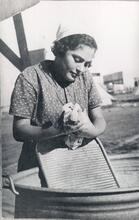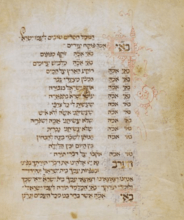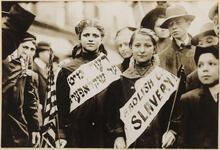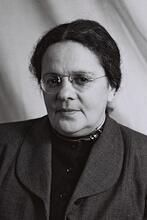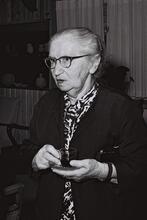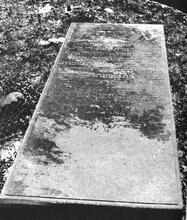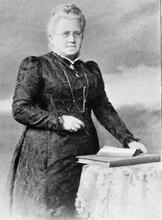Sociodemography
To measure the global status of Jewish women and assess gender equality, it is necessary to look at empirically measured gender comparisons in Israel and in the diaspora. In general, Jewish women are educated and participate in the labor force at higher rates than their non-Jewish counterparts. The growing frequency of outmarriage, and women’s improved position in the socio-economic system, played the main role in the new configuration of Jewish gender, family, and population trends. Overall, Jewish women appeared more often at the stronger end of the Jewish identification continuum with regard to traditional attitudes and behaviors. Over the last several decades, Jewish women attained significant achievement in the socio-economic sphere and played a leading role in maintaining Jewish continuity.
Introduction
In the course of the second half of the twentieth century, momentous changes in the status of women in the more developed societies also deeply impacted Jewish women worldwide. Though women constitute the majority of the total population in most modern societies, their status and opportunities are often de facto those of a minority in comparison with men. The criterion in assessing gender in any given society is the amount of equity, if not equality, achieved by women. The assessment of women’s position in society will differ according to whether one holds that observed sociodemographic differences are best characterized as time lags of variable magnitude within a general process of convergence or are perceived as unbridgeable diversity that is bound to persist or even increase. Understanding the status of Jewish women also requires considering their normative role in transmitting group identity. Since traditional Judaism designates different roles for women and men, evaluation of Jewish women’s participation in the household, in the marketplace, and in the formation of collective culture and identity should take into account both the more traditional and the broader contemporary Jewish contexts.
This review deals with the presence and role of women in critical processes affecting world Jewish population between the 1950s and 2000 in the context of broader trends. We will present empirically measured gender comparisons and gender-specific indicators of Jewish women’s performances in educational attainment and employment, marriage and fertility, and with regard to Jewish identification in major Jewish communities in the Lit. (Greek) "dispersion." The Jewish community, and its areas of residence, outside Erez Israel.diaspora and in Israel.
Socioeconomic Trends
Probably the most impressive change in the status of Jewish women occurred in education. Women almost entirely closed the once wide gender gap and even sometimes surpassed men’s educational attainments. In the United States in 1957, among Jews aged twenty-five and over, twenty-three percent of women had at least some college studies and ten percent had four years or more of college, versus thirteen and six percent, respectively, of all American women. The respective figures for Jewish men were thirty-eight percent with some college studies and twenty-six percent with four or more college years. In 1990, among the 30–39 age group, eighty-five percent of Jewish women had some college studies, sixty-three percent had a college degree and twenty-nine percent had participated in graduate studies. Among white women generally, forty-six percent had attended college and twenty-four percent had a college degree. Among Jewish men in the same age group, eighty-seven percent had been to college, sixty-nine percent had a college degree and thirty-seven percent had gone to graduate school; the comparable figures for white men as a whole were fifty-two percent with some college training and thirty-one percent with a college degree. Hence, over the last thirty years, Jewish women not only maintained their edge in comparison with American women in general but significantly surpassed the average educational attainment of American men. Relative to Jewish men, the large educational gap of 1957 had virtually disappeared by 1990 with respect to college education, although Jewish women’s accomplishment in graduate studies still lagged behind by about one fifth. The high proportion of Jewish graduates in the United States is exceptional and indicates a high degree of professional specialization, setting a path for occupational opportunities.
In Israel, heterogeneous immigration since 1948 brought to the country both highly trained individuals and large numbers of individuals with little or no formal education. By 1961, Israel’s Jews lagged educationally not only in comparison with American Jews, but also in comparison with the total United States population. Among Israeli Jewish women aged thirty and over in 1961, seven percent had completed at least thirteen years of study (the equivalent of some college) and two percent had studied sixteen years or more (implying attainment of a university degree). Among Jewish men, the respective figures were fourteen percent and six percent. In 1997, fifty-four percent of Jewish women aged 25–34 had completed at least thirteen years of study, and twenty-four percent had sixteen years of study or more; among men, the respective figures were fifty percent and twenty-four percent. Jews in Israel had therefore achieved educational levels similar to those of the total of American whites, but still not the unique educational achievements of American Jews. Furthermore, the large gender gap in education that had existed in 1961 had not only disappeared by 1997, but younger adult women had achieved wider exposure to higher education than males of comparable age.
Between the late 1950s/early 1960s and the 1990s, participation in the labor force of Jewish women—as of women generally in many Western countries—increased substantially, as did their specific contribution to various branches of the economy. In the United States, participation of Jewish women in the labor force increased from thirty-one percent in 1957 (versus thirty-five percent for total American women) to fifty-eight percent in 1990 (versus fifty-seven percent). In Israel, the number of working women increased from twenty-seven percent in 1960 to fifty-one percent in 1997. In contrast, the respective figures for Jewish men decreased slightly from eighty-two percent to seventy-six percent in the United States, and from seventy-eight to sixty-one percent in Israel. Focusing on peak working ages (which were different in the two countries), eighty-two percent of Jewish women aged 45–49 in the United States were in the labor force in 1990, while in Israel the figure was seventy-six percent of those aged 35–44.
Since the 1950s, the Jewish labor force has undergone significant restructuring as part of general labor market trends; there has been a relative reduction in the share of agriculture and industry and a large expansion in business, professional, and community services. Women moved out of traditional strongholds in education, social work, and health, joining a broader range of professional and managerial occupations comparatively later than men and eventually often replacing them in those branches. In the United States by the late 1950s, fifty-five percent of all employed Jewish men worked as professionals or managers and proprietors, versus twenty-three percent of total whites. By 1990, the share of Jewish men at the upper range of the labor force continued to be substantially higher than that of total American men (fifty-six percent versus thirty percent). A significant transfer occurred among Jews from managers to professions (twenty percent in the latter in 1957, versus thirty-nine percent in 1990). In clerical, sales, and service occupations, the share of Jews increased from twenty-four percent to twenty-nine percent, similarly to total whites (eighteen percent to twenty-six percent). The comparatively low proportion of Jewish males in the lower echelons of the labor force (crafts, technical jobs, unskilled labor, and agriculture) further declined from twenty percent in 1957 to fifteen percent in 1990, while a decline also occurred among total whites from fifty-eight percent to forty-four percent.
Changes in the female labor force were even more significant. The share of American Jewish women employed as professionals, managers, and proprietors increased from twenty-four percent in 1957 to forty-nine percent in 1990, much faster than among white women, which increased from eighteen percent in 1957 to thirty-one percent in 1990. The share of Jewish woman professionals, by definition academically trained, increased from sixteen percent in 1957 to thirty-six percent in 1990, as against twelve percent to fifteen percent, respectively, among total white women. The Jewish presence among total American professionals, much above their share in the total labor force, is therefore more significant among women than among men. Unlike the trend among Jewish men, professionalization of women did not occur at the expense of managerial jobs, which also grew (though less than among total white women). The proportion of Jewish women employed in clerical, sales, and service occupations declined from sixty-three percent in 1957 to forty-seven percent in 1990, while among all white working women it increased from fifty percent to fifty-eight percent. Women tended to work less as craftspeople, operatives, unskilled, and agricultural workers, their share declining from thirteen percent to four percent among Jewish women and from thirty-two percent to eleven percent among total white working women.
Trends in Israel were similar, bearing in mind the significantly different sizes of the respective economies and the structural differences between the Jewish labor force as a majority in Israel and a minority elsewhere. In Israel, the proportion of Jewish managers and proprietors was much lower than in the United States, while the proportion of craftspeople, operatives, and unskilled workers was much higher. In Israel, more women than men were in professional occupations, although their edge diminished (twenty-three percent of women versus ten percent of men in 1961, and thirty-three percent versus twenty-four percent in 1997). Underrepresentation of Jewish women among managers and proprietors, however, was striking in Israel: three percent in 1997, versus nine percent of men—as against thirteen percent and fourteen percent, respectively, in the United States in 1990. The proportion of Israeli Jewish women at intermediate occupational levels remained constant between 1961 and 1997 (fifty-one percent), when there was a moderate decline among men (from twenty-eight to twenty-four percent). At the lower occupational levels, the share of employed women declined from twenty-four percent in 1961 to fourteen percent in 1997, while among men it declined from fifty-six percent to forty-two percent. These figures testify to the modernization of the Israeli economy and to the declining share in the Israeli economy of agriculture, industry, construction, and transport at a time of a growing orientation toward more sophisticated manufacturing and professional services.
The increased incidence of women in the marketplace followed parallel paths in the United States and Israel as the women’s share of the total Jewish labor force increased from twenty-six and twenty-nine percent, respectively, circa 1960 to forty-five and forty-seven percent circa 1990. In the United States, the women’s share increased from twenty-four percent to forty-three percent of Jewish professionals, and from nine percent to thirty-nine percent of Jewish managers and proprietors. Women strengthened their already dominant share at the intermediate occupational levels (clerical, trade, and services) from fifty-one to fifty-seven percent of the total and experienced a moderate decline in their share of the lower occupational levels (crafts, technical jobs, unskilled labor, and agriculture) from twenty to seventeen percent. In Israel, over a similar thirty-year span, women’s share among professionals increased from an already high forty-six percent to fifty-four percent; among managers and proprietors, from eight percent to twenty-one percent; among intermediate occupational strata, from forty percent to sixty-five percent; and among lower occupational strata, from thirteen percent to twenty-two percent. The disproportionate increases at the upper level merit special attention, as they signify the massive entry and definitive presence of women at the more educated and decision-empowered end of the labor force. At the same time, women maintain their preponderant role at the functionally important level of clerical and other white-collar auxiliary occupations. However, due in part to women’s later entry, they have less seniority in those positions, while—due in part to the greater frequency of women’s part-time employment—their real income continued to lag behind that of men with comparable background and skills.
Data on labor-force characteristics do not always provide a good picture of the many different kinds of work that people do. Activities that are not economically rewarded are usually not documented by socioeconomic sources. Interesting insights into the complex of economically visible and invisible work can, however, be obtained through the study of time budgets in Israel. The main gender-related difference concerned the time spent on paid work activity (8.4 percent of average total time for women, versus 19.4 percent for men in 1991). This was fully compensated by the time allocated to unpaid work—defined as domestic work, shopping, services, errands, child-care, helping, and volunteering—which accounted for 18.2 percent of total daily time on the average for women, as against 7.1 percent for men. Adding together the two figures for paid and unpaid work respectively obliterated the difference between the genders: women performed an average of 384 daily minutes of work, versus 382 for men. These findings help to clarify the internal articulation of one of the main factors of gender inequality in society—the convention by which certain types of work (mostly performed outside the household) receive monetary compensation, while others (mostly performed inside the household) do not. Compared internationally, the total paid and unpaid workload of Jewish women in Israel was not particularly heavy. Women in the United States (1985) were estimated to work a daily average of 453 minutes, versus 428 for men; in Canada (1992), the respective figures were 429 and 430; in the United Kingdom (1985), 413 and 411; in France (1985/1986), 429 and 388; and in Australia (1992), 443 for both sexes.
Different religious lifestyles were related to significant gender differences in the allocation of working time. Time budgets of Israeli Jews regarding paid, unpaid, and total work were compared for four groups of households classified according to their self-assessed religiosity. The same women’s predominance in non-paid work and men’s predominance in paid work appeared in each group. However, women’s participation in paid work was more strongly—and negatively—related to their religiosity than that of men. The more religious women devoted more time to unpaid work, mainly child-care (consistently with their larger-than-average families). The substitution of unpaid for paid work appeared more clearly among women than among men. Whether or not the result of conscious choice, a more traditional environment was associated with less economic equality between the sexes and a greater relative workload for Jewish women in Israel—and probably also elsewhere.
Family Patterns
As is common in developed societies, the conflict of interests between economic and career roles on the one hand and family roles on the other was associated with the postponement of, and the decline in, Jewish marriage and family growth in the diaspora. Changes in women’s labor-force participation, and more generally in their position in the socioeconomic system, affected the timing and frequency of marriage and childbearing. Along with a diminishing frequency of marriage, increase in divorce contributed to relegating the conventional nuclear family—once the predominant household arrangement—to being only one of several alternatives available. Women, who head most single-parent families, disproportionately bore the brunt of family destabilization.
Jews historically preceded many other social, religious, and ethnic groups in completing the transition from lower to higher ages at marriage, and from higher to lower fertility. Jews were more conservative in catching up with increasing rates of divorce in the United States and they were barely receptive to the recent spread of births outside marriage. In the United States, young Jewish adults tended to leave home and form non-family living arrangements more than members of other groups. Jewish women were almost as likely as Jewish men to leave home, in contrast to women of other ethno-religious backgrounds.
So far as the propensity to marry is concerned, in both the United States and in Israel after World War II marriage was virtually universal among Jews by age thirty-five. Thereafter, Jews and total American whites followed different paths in the framework of a common trend of change. The proportion of ever-married adults dropped among American Jews from eighty-five percent of women and seventy-five percent of men aged 25–29 in 1970, to sixty-one percent and thirty-five percent, respectively, in 1990. A similar though milder trend emerged in Israel, with eighty-eight percent of women and seventy-three percent of men ever-married at age 25–29 in 1969, vs. seventy-three percent and fifty percent, respectively, in 1995. In 1970, among Jews aged 35–44, only two percent of women and four percent of men were never married, versus five percent and seven percent, respectively, of all whites. By 1990, however, the proportions of never-married had increased to eleven percent of Jewish women and seventeen percent of Jewish men, versus seven percent and twelve percent of total whites. Marriage postponement was more significant among men than among women. If continued indefinitely, this trend will result in 20–25 percent of Jewish adults never reaching marriage; if the trend accelerates, figures could run as high as 40–50 percent.
Such figures do not necessarily indicate a less widespread positive orientation toward family values among younger Jewish adults. A significant factor hampering marriage is an imbalance in age-sex composition in many Jewish populations since World War II, following the dramatic decline of the Jewish birthrate in Europe during the Holocaust, but also (more significantly for US Jewry) due to the sequence of baby boom and baby bust during the 1950s, 1960s,e and 1970s. Since grooms are usually somewhat older than brides, the sequence of larger and scantier birth cohorts caused alternating and significant shortages in the number of male and female marriage candidates. The problem became more acute due to the growing tendency of young Jewish adults to find spouses outside the Jewish community. Possible additional factors are the high cost of housing and the growing perception of a career-household conflict. To some extent, improved educational attainment and increased participation in the labor force came to interfere with more traditional family roles, especially for women.
Fitting into this general pattern is the increasing incidence of divorce. Among the total population of the major Western countries, thirty-five percent to over fifty percent of those who married in recent years are expected eventually to divorce. In the past, there was a lower (albeit increasing) tendency among Jews to divorce. However, survey data show that the gap has almost closed. Of all ever-married Jews aged 35–54 in the United States in 1970, eleven percent of women and thirteen percent of men had divorced at least once, although the large majority of them had since remarried. The frequency of divorce among the general white population in the United States was roughly twice as high. By 1990, fifteen percent of ever-married Jewish women and twelve percent of ever-married Jewish men aged 35–64 were currently divorced or separated (not accounting for remarriage)—a level almost identical to that of total whites. Adding those who remarried, the level of ever-divorced among the general American population reached forty-three percent for women and thirty-eight percent for men.
Although divorce among Israeli Jews also rose significantly, it remained relatively moderate. Of all marriages performed circa 1970, fifteen to eighteen percent had ended in divorce by 1995, while the percentage of currently divorced stood at thirteen percent for women and eight percent for men. In view of the increasing trend toward divorce, it can be estimated that nineteen to twenty-three percent of the marriages performed among Israeli Jews around 1990 will eventually end in divorce. Remarriage has become less common; when it does occur, it more often involves divorced men.
The growing frequency of outmarriage also played a main role in the new configuration of Jewish gender, family, and population trends. Debate about mixed marriage and its demographic consequences was greatly stimulated by the 1990 National Jewish Population Survey (NJPS), which estimated that fifty-two percent of all marriages involving Jewish-born spouses between 1985 and 1990 were outmarriages, after allowance for conversion to Judaism of non-Jewish partners. The NJPS pointed to a rapid increase in Jewish outmarriage during the 1960s, 1970s, and 1980s. Data for the more recent marriage cohorts show the current level of mixed marriage comes closer to seventy percent among members of the fourth generation whose grandparents were born in the United States. More recent figures from the 2001 NJPS indicated a tendency to stabilize and further moderate increases in out-marriage frequencies (fifty-four percent of all marriages involving Jewish-born spouses between 1996 and 2001). Based on a more restrictive definition of Jewish identification that ignores those who converted out of Judaism, the respective outmarriage rates were forty-three percent in 1985–1990 and forty-seven percent in 1996–2001. Based on the same definition, in 2001 thirty-three percent of all Jewish men and twenty-nine percent of all Jewish women were married to a non-Jewish partner. Among Jews under the age of thirty-five, the respective frequencies were forty-seven and thirty-seven percent, pointing to a residual lower outmarriage propensity among Jewish women.
Frequencies of outmarriage around or above fifty percent were estimated for Jewish communities in other West European and South American communities, as well as in Ukraine. Outmarriage frequencies were somewhat lower in Canada and Australia and even lower in Mexico, where they barely reached ten percent circa 1990. Perhaps the major demographic divide between Jews in Israel and in the diaspora concerns the choice of spouse and the frequency of marriage with non-Jewish partners. Mixed marriage involves about five percent of current marriages in Israel because of the predominantly Jewish context of Israeli society. Most cases reflect the increasing numbers of outmarried families and non-Jewish young adults who have migrated to Israel in recent years, especially from the former Soviet Union.
In the past, during the early stages of acculturation in America, there were rare cases in which Jewish women were co-opted by marriage into the mainstream of society. Later, the frequency of intermarriage was generally lower among women, due to Jewish women’s lower levels of schooling and participation in the labor force. More recently, the level of mixed marriage among Jewish women has grown more rapidly than among men. The reduction in gender-related educational and occupational gaps resulted in women’s increased access to an expanded pool of marriage candidates. Today, the high social ranking of Jews of both genders makes them attractive marriage candidates.
The propensity of non-Jewish spouses (still mostly women) to convert to Judaism declined relative to the total number of outmarriages. More important in evaluating the consequences of mixed marriage for the Jewish family is the religious identification assigned by parents to their children. Past research consistently indicated that the majority of children born to interfaith couples were identified with the non-Jewish parent, or else were assigned dual or no religious identification by the parents. The 1990 United States NJPS data shows that the distribution of children of mixed marriages was eighteen percent Jewish only, twenty-five percent dual Jewish and Christian, thirty-three percent Christian only, and twenty-four percent no religion. In 2001 the United States NJPS indicated a stronger tendency among out-married couples to assign their children a Jewish identity—but this still applied to only about one third of all eligible children. Children whose identificational options are postponed typically socialize in the environment of the majority rather than that of the minority. Religious identification of the children of mixed marriage tends to be affected by the mother, at least in English-speaking countries. Some past evidence of a prevailing paternal influence on children’s identification in Latin societies needs to be corroborated by more recent data.
In the United States and in the United Kingdom, the most important factor associated with the frequency of mixed marriage is the cultural environment provided in the parental home during childhood. The level of Jewishness of the parental home exerts stronger and more lasting effects on adult identification than does the type and amount of formal Jewish education received, although the latter has also definitely been shown to strengthen Jewish identification. Some circular correlation was found between divorce, remarriage, and mixed marriage. Outmarriages tend to terminate in divorce more often than inmarriages, but remarriages after divorce often tend to be outmarriages. Interestingly, the relationship between socioeconomic status and mixed marriage has moved from direct to inverse: recent data point to higher levels of outmarriage among Jews with lower social status.
Another fundamental demographic divide between Jewish women in Israel and in the diaspora concerns fertility levels and family size. Jewish fertility levels in Israel were relatively stable and unusually high, when compared with most other developed countries. In 2001, fertility (measured through the Total Fertility Rate, TFR) was 2.6 children, more than enough to support continuing population growth. Women from countries in Asia and Africa had an average of about six children during the 1950s but underwent widespread modernization in Israel. Their fertility declined to just above three while the lower fertility of Jewish women of European origin tended to converge upwardly. The family size of Jewish women born in Israel—often the product of the intermarriages of immigrants from different continents—fell somewhere between the characteristics of the various immigrant groups.
In the United States fertility fluctuated significantly over the years in accordance with the time when women reached prime child-bearing ages. The economic depression of the 1930s determined sharp fertility declines. Economic recovery during World War II and the postwar period of prosperity, optimism, and upward mobility brought about a baby boom that peaked during the late 1950s. The transformations in American society since the late 1960s, including rising economic expectations, individual achievement, and more complex roles for women, were associated with a renewed decline of fertility. The Jews anticipated more general trends and tended to respond more quickly to periodic changes at a lower level, as appropriate to a better-educated population fully in control of reproduction. Jewish attitudes toward reproduction continued to be fairly traditional and child-oriented, but actual reproductive behaviors fell short of declared intentions. Larger-than-average families among the Orthodox community were the exception, but these had only a minor impact on the overall fertility of American Jewry.
In Soviet Russia prior to World War II, Jewish mothers born at the beginning of the century were already bearing an average of 1.5 children or less. What is completely absent in the Soviet Union is any sense of a postwar demographic recovery. Jewish fertility levels in the region appear to have been the product of a situation of permanent, unrelieved economic depression prevailing over the seventy-three years of Communist rule. Yet no matter how different the United States and Soviet social systems once were, Jewish fertility levels in these countries tended ultimately to converge. In most other Jewish communities during the past twenty to thirty years, Jewish fertility levels stood far below the minimum for generational replacement.
Even at the height of the baby boom, the maximum level of completed Jewish fertility in the United States reached approximately 2.5 children—a level just below the minimal level ever experienced in Israel. There is no definitive proof that the same women would have borne a different number of children had they lived elsewhere, but Jewish communities, or even families split by international migration, display clearly different demographic patterns. Compositional differences such as a higher proportion of religious families in Israel or the comparatively higher educational level in the diaspora do not adequately explain the Israel-diaspora fertility differentials.
The uniqueness of Israeli Jewish fertility—Israel is the sole developed country currently above demographic replacement—is the more remarkable considering the already noted general improvement in educational levels, large-scale entrance into the labor force of Jewish women since the early 1960s, and the much-improved standards of contraception. It is also worth noting that between one-fourth to as many as more than half of all births in Western countries now occur out of marriage. Among Jewish women, births out of wedlock did not become fashionable. Children born to single mothers constitute just above one percent of the Jewish birthrate in Israel. Paradoxically, the near absence of such births contributes to the lowering of Jewish fertility in the diaspora.
Given the widespread and efficient control of family size, the fundamental determinant shaping family size is the interplay between the normative value of children, the cost of child-rearing and the economic resources available to the household. On the whole, Jewish families in the diaspora have at their disposal more personal economic resources than do Jews in Israel, but a feeling of insecurity, possibly associated with minority status, has been suggested as a significant determinant of lower fertility. The growing adaptation of contemporary Jewish communities to the general environment might be expected to lead to more security and higher fertility, but this has not occurred. The explanation of fertility differentials, therefore, needs to turn to the different meaning of, and commitment to, Jewish continuity. An additional factor, inherently related to the former but bearing independent results, is that Israel, as a Jewish-oriented state, encouraged the establishment of child-care facilities and woman-friendly social security benefits that made child rearing more feasible than in many other countries of similar economic level. Further attention should be devoted to creating a more gender-balanced orientation toward child-rearing. Population policies in countries that encouraged socioeconomic benefits for mothers and a greater involvement of fathers in the child-rearing process have been associated with higher birthrates than in those countries which lack such provisions.
The demographic consequence of a fertility level in Israel of 2.6 Jewish children on average per woman, as opposed to 1.5 or less in other Jewish communities, with few exceptions, corresponds to a ratio of nearly 2:1 children ever born in Israel versus the diaspora. This dramatic contrast has obvious implications for Israel-diaspora relations in the coming decades.
Jewish Identification
Jewish women increasingly play the predominant role as the main guardian and conveyor of Jewish identification. Further corroboration of this trend comes from the growing visibility of women among the lay and religious leadership of Jewish communities locally and internationally, both in general and in women’s organizations. But a note of caution should be sounded: as a consequence of narrowing educational, occupational, and social gaps, Jewish women are being exposed as much as Jewish men to the effects of social interaction with members of other ethno-religious groups and to the ensuing process of cultural assimilation. Thus, the Jewish identificational edge clearly documented here for Jewish women might at some future point decline or disappear.
It is reasonable to expect that, under the impact of socioeconomic and demographic change, gender attitudes toward Jewish identification would also undergo transformation. The level of involvement of men and women in a variety of Jewish observances and other forms of Jewish communal activity can be compared in different countries between the 1970s and the 1990s. In the United States, different indicators of Jewishness evolved along quite different paths. Measures of religious observance and synagogue attendance remained stable; the level of membership in Jewish religious and lay organizations, of philanthropic activity, and of the Jewishness of informal social networks generally declined; and connections with non-Jewish organizations, as well as visits to Israel, became more widespread. A composite index of observance of Jewish traditional precepts (fasting on the Day of Atonement, not eating leavened products on A seven-day festival to commemorate the Exodus from Egypt (eight days outside Israel) beginning on the 15th day of the Hebrew month of Nissan. Also called the "Festival of Mazzot"; the "Festival of Spring"; Pesah.Passover, observing laws of The Jewish dietary laws delineating the permissible types of food and methods of their preparation.kashrut and Sabbath observance) was reported to be slightly lower among women than among men in 1970 but had become higher for women by 1990. A similar reversal of gender patterns appears in the frequency of synagogue attendance and membership. In all other measures of Jewishness, women reported frequencies similar or slightly higher than those of men in 1970 and by 1990 they had substantially strengthened their edge. The frequency of Jewish women’s membership in non-Jewish organizations, which had lagged significantly behind men in 1970, had also grown by 1990. By all accounts Jewish women in the United States in 1990 were more involved in Jewish activities than men, reversing in most areas what had been noted twenty years earlier.
In France, a decade after the mass influx of Jewish immigrants from North Africa, Jewish women reported more often than men that their mode of attachment to Judaism was through religion and family traditions. Their adherence to traditional practices such as fasting on the Day of Atonement, not eating leavened products on Passover, and observing the laws of kashrut and of the Sabbath was also higher than that of the men. In addition, women were more likely to have visited Israel. At the same time, they reported less frequent synagogue attendance, a lower level of membership in Jewish organizations, less regular reading of Jewish books and newspapers, and less knowledge of Hebrew and Yiddish. Weaker public Jewish activity may be related to women’s lesser educational attainment in the past. Overall, Jewish women displayed a more traditional orientation although the secular mode of attachment to Judaism as “a reality without religious content” was also more frequently reported by women.
The behavior of Jewish women in Israel during the early 1990s revealed an apparent contradiction regarding religiosity and Jewish tradition. On the one hand, the frequency of their synagogue attendance, the amount of time devoted to religious activity, and their self-identification at the more religious end of the Jewish continuum were all low on average when compared with the practice of men. On the other hand, Jewish women were more concentrated at moderately high levels of self-assessed religiosity, and they reported a higher level of observances in areas such as fasting on the Day of Atonement, not eating leavened products on Passover, and abiding by the Sabbath regulations.
International data on Jewish education indicate past significant gender gaps. Male children were more likely than females to receive formal Jewish education, primarily because of their greater overall exposure to education, but also because it was considered more of a traditional duty to provide them with religious instruction. The Lit. "son of the commandment." A boy who has reached legal-religious maturity and is now obligated to fulfill the commandmentsbar mitzvah ceremony was considered mandatory for boys, whereas Lit. "daughter of the commandment." A girl who has reached legal-religious maturity and is now obligated to fulfill the commandmentsbat mitzvah ceremonies were rare until recently. From the 1960s, this educational gap gradually narrowed, although as of 1990 it had still not totally disappeared. The relative disadvantage of Jewish women of different ages regarding exposure to formal Jewish education diminished among the younger cohorts. The trend toward gender equalization was particularly evident in the area of Jewish day-school attendance. Data from the 1970 NJPS show a Jewish educational lag of minus sixty-six percent among Jewish women vs. men aged fifty-five and over, compared with minus seventeen percent among the Jewish school-age population (aged 6–13 at that time). By 1990, the gap had dropped to a mere minus one percent among the 18–24 age group. Similar gaps in Jewish day-school exposure of women declined from minus 50 to minus 10 percent in France, from minus 44 to minus 22 percent in South Africa, and from minus 27 percent to a 2 percent female edge in Italy between the late 1960s and the 1990s.
Gender gaps with respect to part-time Jewish education (talmudei torah, hadarim, Sunday and afternoon schools) were more variable and were affected by the different characteristics and purposes of such programs in the various countries. In the United States, where part-time education constituted and still largely constitutes the predominant channel of formal Jewish education, gender gaps were significantly smaller than in the case of day schools, though persisting over time. In France, gender gaps were generally greater and revealed a persisting male-oriented educational approach, which in part reflected the Jewish education that was received in the countries of origin (mostly North Africa) of the largely immigrant Jewish community. In South Africa and Italy, where day schools were the primary Jewish educational channel, gender gaps in part-time education displayed less clear trends.
These data do not reveal much about the intensity of the Jewish educational experience, as measured in years of exposure, nor about the quality or content of study programs and the training of teachers. They do, however, clearly point to the gradual diffusion of increasingly similar norms regarding the Jewish education imparted to Jewish boys and girls.
In sum, notwithstanding the significant differences in the national contexts examined here, fairly consistent gender patterns emerge regarding various indicators of Jewishness. Interpretation of the data should distinguish between patterns that are tied to the transitional status of women in the general processes of social mobility, as opposed to patterns that are more deeply ingrained in different gender roles and perceptions. Overall, Jewish women appeared more often at the stronger end of the Jewish identification continuum with regard to traditional attitudes and behaviors, and they reported an attachment to Judaism more often tied to religious values. Moreover, the level of primarily domestic traditional observance was consistently higher among women. In contrast, synagogue attendance outside the United States tended to represent a predominantly male dimension of Jewishness, whether interpreted as distinctly religious behavior or as a more general public expression of Jewish identification. Consistent with the clear trend toward diminishing gender-related educational and socioeconomic lags, Jewish women have gradually become more equal or even dominant in areas such as Jewish education, membership in Jewish organizations, the development of alternative types of Jewish social networks, and volunteer work for philanthropic causes.
A Global View
While the gender trends mentioned so far constitute a perspective on individuals in various places, it is necessary to complete the picture with a more global evaluation. An overview of indicators concerning the position of women in societies with large Jewish populations may throw additional light on the issues discussed here. The UN Gender-related Development Index (GDI) assesses existing gender inequality in three areas crucial to human development—longevity, education and standard of living. Israel’s GDI was ranked twenty-second out of 144 countries surveyed in 2002. Israel’s international ranking was twenty-second for women and sixth for men regarding life expectancy; thirtieth for women and thirty-second for men regarding school-enrollment; and twenty-fifth for women and men alike regarding real GDP per capita.
The Gender Empowerment Measure (GEM) is a more specific international measure of gender performance aimed at assessing the relative empowerment of women and men in political and economic spheres of activity. Two of GEM’s components—women’s share of total administrative and managerial positions, and their share of total professional and technical jobs—help to evaluate the level and quality of women’s employment and professional decision-making power. The third component—women’s percentage share of parliamentary seats—reflects political participation and high-level influence. Israel’s GEM ranked thirty-seventh out of 102 countries (according to available data in 1997), and twenty-fifth out of 78 countries (based on 2002 data). However, results are quite different regarding each of the three variables that comprise the gender empowerment measure. Israel’s ranking in 2002—twenty-fifth out of 177 countries—is appropriate regarding the share of women in professional and technical jobs and consistent with the already noted relatively high level of women’s educational attainment and school enrollment, in absolute terms and relative to men. However, Israel’s rating declines considerably—to forty-eighth—regarding the share of women among administrators and managers. This points to persisting obstacles or lack of encouragement for women to enter public administration; in the private sphere, it probably indicates lesser opportunities, or expectations, for women to display initiative. Israel’s international standing, moreover, falls considerably regarding the share of parliamentary seats held by women (sixty-seventh) and the ratio of women’s to men’s income (seventy-eighth).
Finally, Israel women’s share of ministerial-level posts (including elected heads of state, governors of central banks and similar high-ranking positions) was ranked thirty-sixth. The presence of one to three women ministers in the government of the Sixteenth Lit. "assembly." The 120-member parliament of the State of Israel.Knesset (February 2003), though not especially poor in comparison with more developed countries, demonstrates how limited a role Jewish women still play in major-league politics. Interestingly, where high policy considerations prevail (as in government formation), the space cleared for women is somewhat larger than when party politics are left to their unrestrained rules (as in the process of selection and ranking of the candidates to the Knesset). Israel’s ranking, while generally in line with that of other developed countries, was consistently weaker than that of the Western countries with the largest Jewish populations.
International comparisons clearly indicate that a more integrated role for women in economic and political life can be taken as one of the surest indications of the degrees of general human development in a society. In this broader context, the status of Israeli women does not deviate from the general standing expected of a country fairly well rated among nations regarding the quality of life and human development. But Israeli women did much better as decision-makers and producers in the intellectual, scientific and economic life than in the political-administrative arena. Such status inconsistency can be summarized by saying that an Israeli woman is far more likely to be a physician carrying out a heart bypass than an administrator responsible for a road traffic bypass.
In sum, Jewish women over the last decades attained significant achievement in the socioeconomic sphere and played a leading role in maintaining Jewish continuity. This enormously augmented share of responsibility, however, was not matched by the share of power exerted by women. If current trends are a predictor of future ones, this pending conflict will be solved through normal completion of the ongoing transition toward equality, but this will not occur without more active institutional interventions that encourage and ease the definitive establishment of women’s equitable role in Jewish society.
DellaPergola, Sergio. “Jewish Women in Transition: A Comparative Sociodemographic Perspective.” In Studies in Contemporary Jewry, Vol. 16, edited by J. Frankel, 209–242. New York: 2000.
United Nations Development Programme. Human Development Report 2004: Cultural Liberty in Today’s Diverse World. New York: 2004.


